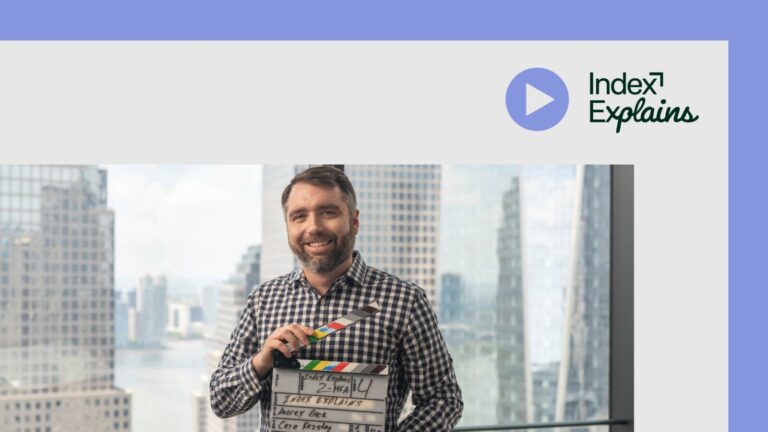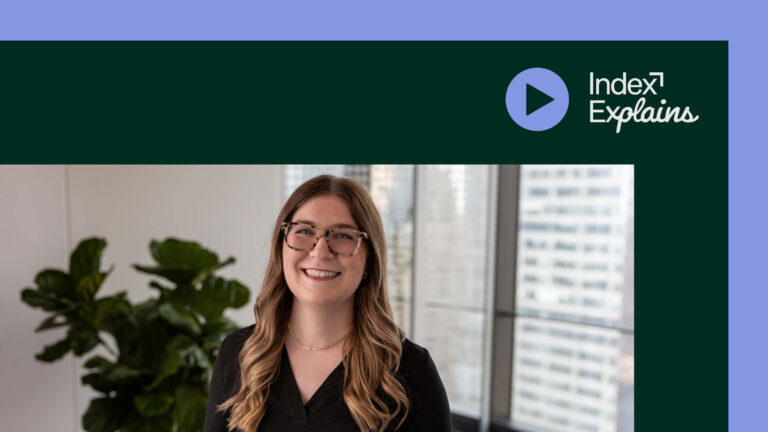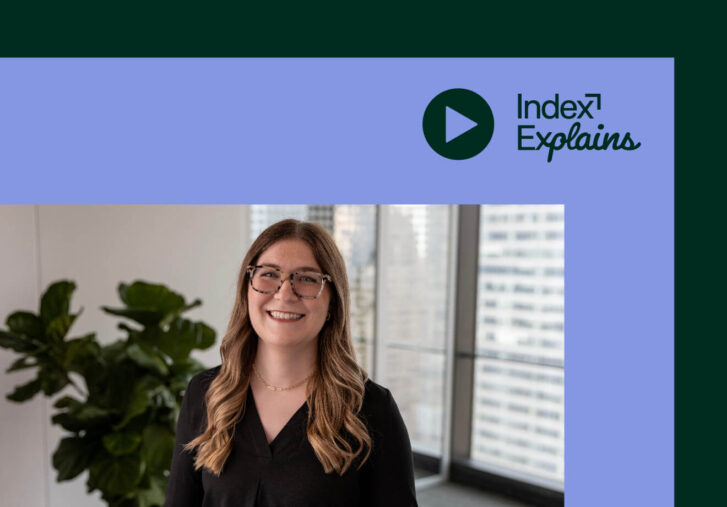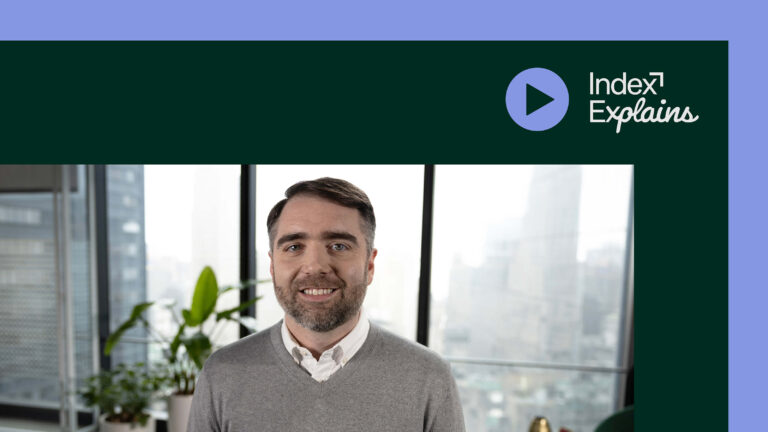Video transcript
Lori Goode: There’s a confluence of events occurring in ad tech today, all driving towards more efficiency and value in the supply chain. The concept of supply path optimisation, or SPO, is more relevant today than ever. Hi, I’m Lori Goode, chief marketing officer at Index Exchange, and I’m joined by Brian O’Kelley, the co-founder and CEO of Scope3. Today we’re going to talk about the evolution of SPO and get his take. Thank you for being here.
Brian O’Kelley: Thanks for having me.
LG: So, Brian, you coined SPO in 2016 while you were at AppNexus, I believe. Over the years, the meaning has changed. Tell us a little bit more about the origins of SPO and what caused you to create that terminology.
BO: Yeah, so at AppNexus, I was sort of obsessed with auction theory. The whole idea of real-time bidding and the ad exchange was we’re going to auction every impression in real time. I think what people don’t really think about is all auction theory assumes a single auction happens. You go to Christie’s, there’s a painting, you auction, everyone bids, the winner takes all, and you’re done.
But, we actually have layers of auctions. We have auctions of auctions. If you think of how an ad server might be pre-empted by header bidding—header bidding holds a first-price auction. The price would be pushed into an ad server. There’s another auction that might be a second-price auction. So with all these really weird dynamics, what’s the optimal way to bid into an auction of auctions, into a second auction with different dynamics? There’s no theory out there.
So I started talking to economists and professors at Princeton and Stanford being like, how do we think about this? As I explored these questions, it became obvious to me that the way that we run these auctions makes it almost impossible for a buyer to make an optimal decision. And that if we could define a single path where we knew what would happen—this is the most efficient path—the entire conversation becomes dramatically easier.
So I said, I think, as a DSP, we should choose one path. We should figure out the best path and just bid once. Now, we also ran an SSP, and the idea that we would be first, actually creating a competition between SSPs to be the most transparent and the lowest price was terrifying. Actually, my management team at AppNexus said, you’re going to totally disrupt our business, this could cost us millions of dollars, you can’t do this. Don’t talk about SPO. It’s too powerful. So I said, fine. But I felt an obligation to share these ideas, so I started my own blog, BOKonAds. I published this idea of supply path optimisation on my blog, not as a CEO of AppNexus, but as like, curious ad tech guy, because I felt like I wanted to explore the ideas. It was pretty disruptive, this core idea.
LG: I don’t think I actually have ever heard the full story. That’s super interesting. So can you share some insights about the evolution of SPO from when you first started and since then how it’s evolved? Or any major changes or advancements that you’ve seen over the years? Because that was quite a few years ago, and a lot changes over that period of time in our industry.
BO: So, imagine me Saturday morning, my daughter watching cartoons while I furiously wrote queries to try to figure out how many times we saw the same impression as a DSP. What I could figure out was I could look at clearing prices to see well, when we buy from this partner, it clears $0.20 more than if we bought from this other partner. Why would we do it? Is it the same placement? Is it the same user? Is there anything different?
There are all these problems if you start digging down into just basic questions like, am I going to get different efficiencies if I stop buying the more expensive partner? Or is this somehow a better way of buying? Is it more expensive for a reason? And so I started doing experiments. I just started to say, well, what if I go from 20 supply paths to two? Do I see any performance impact? Does price change?
Pretty soon it was clear that this was a very effective way to put pressure on the supply chain. So AppNexus actually did begin to roll out SPO, and there was massive controversy. I remember a large SSP CEO in my office basically saying, “You can’t do this. You’re buying your own supply, you’re biasing to yourself.” Because we had both a DSP and SSP, it was actually just incredibly controversial.
I think where SPO went from my science experiment to being kind of a commercial conversation, was because there’s a lot of incentives that exist in the supply chain. You might have an SSP saying, “Well, hey, agency, I want you to prefer my supply path. Don’t let AppNexus, you know, don’t let Brian on his weekend decide where to buy. You the agency should make this decision, which might be for efficiency reasons, it might be for business reasons, but this should be an agency strategy. Your job is to run investment for the agency, you should decide these investment paths.”
So it went from being transparency and technical optimization to being a commercial investment discussion. I think that’s what we see now, is almost two kinds of SPO: an efficiency discussion and a business investment conversation.
LG: You’re right that it’s become a mechanism now for buyers to optimise the strategy on their side. How do you think it benefits media owners and the ecosystem more largely beyond the buyer situation?
BO: Well, I think from a media owner perspective, the nice thing about auctions is that auctions will always go to the highest price. So I say the auction dynamic is inherently biased to the media owner. The question is how do you get the most bids? And sort of obviously, you say I want as many bids as I can get. So the onus goes on the buyer to try to figure out those efficient supply paths. So auction mechanisms force the buyer to be intelligent.
I don’t think that SPO is necessarily good or bad for publishers. The question is really about, is the full bid being expressed? How does the publisher kind of arm up against a very aggressive buyer? Imagine one massive buyer that can see the full supply chain and says, well, I’m not going to express my full value. I might be willing to pay $10, but I’m only going to bid $2, or $1, or $0.50. And this is the tension in any auction, or any kind of competitive marketplace—who fights back for the publisher?
I think we’ve historically leaned on the auction as the magic mechanism. You see, like Google as an example, turning off the ability to do dynamic bid floors because they want Google to make these decisions. Trust us, we will figure it out. But that’s the dangerous and the complicated part of this. If SPO is fighting for efficiency for buyers, and publishers don’t have yield management roles, what is the equilibrium and for whom do we find that balance? I think that’s the really interesting tension—what’s the opposite of SPO for publishers?
LG: That’s right. And I think the separation of the interests of DSPs and SSPs that you focus on is important. So SPO, improving transparency, efficiency, and quality among supply-side players, what about sustainability? I think it’s something near and dear to your heart and to ours as well—how does efficiency decarbonise the supply chain?
BO: I think that there’s an optimal path, or optimal number of bid requests. I mean, just imagine the simplest case where a publisher goes to every sort of unique source of demand on every impression. Let’s say that’s 50 or 100 possible demand paths. That’s actually a relatively low carbon footprint. It’s not that many requests to drive out.
What we see is an average that’s dramatically higher than that. We see thousands. And there’s a lot of redundant paths. So when I think about SPO from a buyer perspective, it’s about eliminating redundant paths. But the issue is that even if you choose half the paths and I choose half the paths, what if we choose different paths?
Now, there’s still demand going down every path. The only way to really reduce the paths outright is for the publisher to decide to have fewer paths.
Now, I’ll use a different analogy. If you think of an airline, let’s say there are 10 flights from New York to Chicago every day and two companies decide they’re going to fly less frequently. One says, I’m only flying on the American flights and the other says, I’m only flying on the United flights. We didn’t actually get any planes out of the air. We actually need to do something to get fewer flights. And that means a consolidation of paths.
We need everyone to agree not just to fly only American, but fly American on the 2 pm flight and the 6 pm flight. Or, to agree we’re going to only fly on the fullest planes. So it’s kind of a different way of thinking about efficiency. We want fuller planes. As a consumer, of course I hate full planes, but from an efficiency perspective, we want full pipes. We want high win rates, to use the programmatic equivalent.
If you look at the overall average win rate of the ecosystem, that’s a great proxy for sustainability. A 1% win rate means there’s about 100 bidders in every auction. I think the average right now is like 0.1%, and that’s the problem—it’s a 10X reduction in energy use if we were to figure out, as an industry, how we consolidate these redundant supply paths.
LG: The plane analogy is perfect actually, because it reduces cost for the buyer, the passenger, as they’re filling that space and then it ends up being much more efficient for the plane owner.
It’s no longer, I don’t think, a tradeoff necessarily between reducing emissions and improving performance. What do you envision as the future of SPO and what does it mean for the economics of advertising?
BO: If you think about where we are today with tons of auctions, that’s really what’s ensuring that publishers are getting the highest possible return. But once you fix the redundancy problem, you can actually introduce new auction logic. You can actually add yield management. You can bring in things like sustainability as a factor in an auction where you say, I want the best possible price, but I’m not going to compromise on the sustainability of a product. Maybe I’ll actually preference a greener product over a less renewable one.
We start seeing really interesting ways of driving holistic outcomes for publishers, and that will drive a whole new generation of publisher tooling. If you’re an SSP, or if you’re thinking about this from a future-of-the-business perspective, you can be a lot more effective when you have less cruft in the overall process—a lot less complexity. So I think that’s a huge opportunity. I think a new generation of ad tech will emerge based on a different set of outcomes and objectives for the entire ecosystem.
So economically, I think this means more leverage and control for publishers because they’re more directly connected to advertisers. The way this really works is advertisers want to connect to these audiences. The fewer intermediaries, the less jargon and complexity, the more we’re actually talking about media and advertising and not about a bunch of techie terms that people like me come up with that just spend a decade confusing everyone. Let’s just get this back to basics like, put great ads on great media with as much power to make good decisions as we possibly can deliver.
LG: Yeah, and I think that yields a better viewer experience, customer experience, too. Brian, thank you so much for sharing all of the back story on SPO and how far it’s come since that time, and thanks so much for joining.
BO: Thanks for having me.
Learn more about our approach to exchange efficiency.








